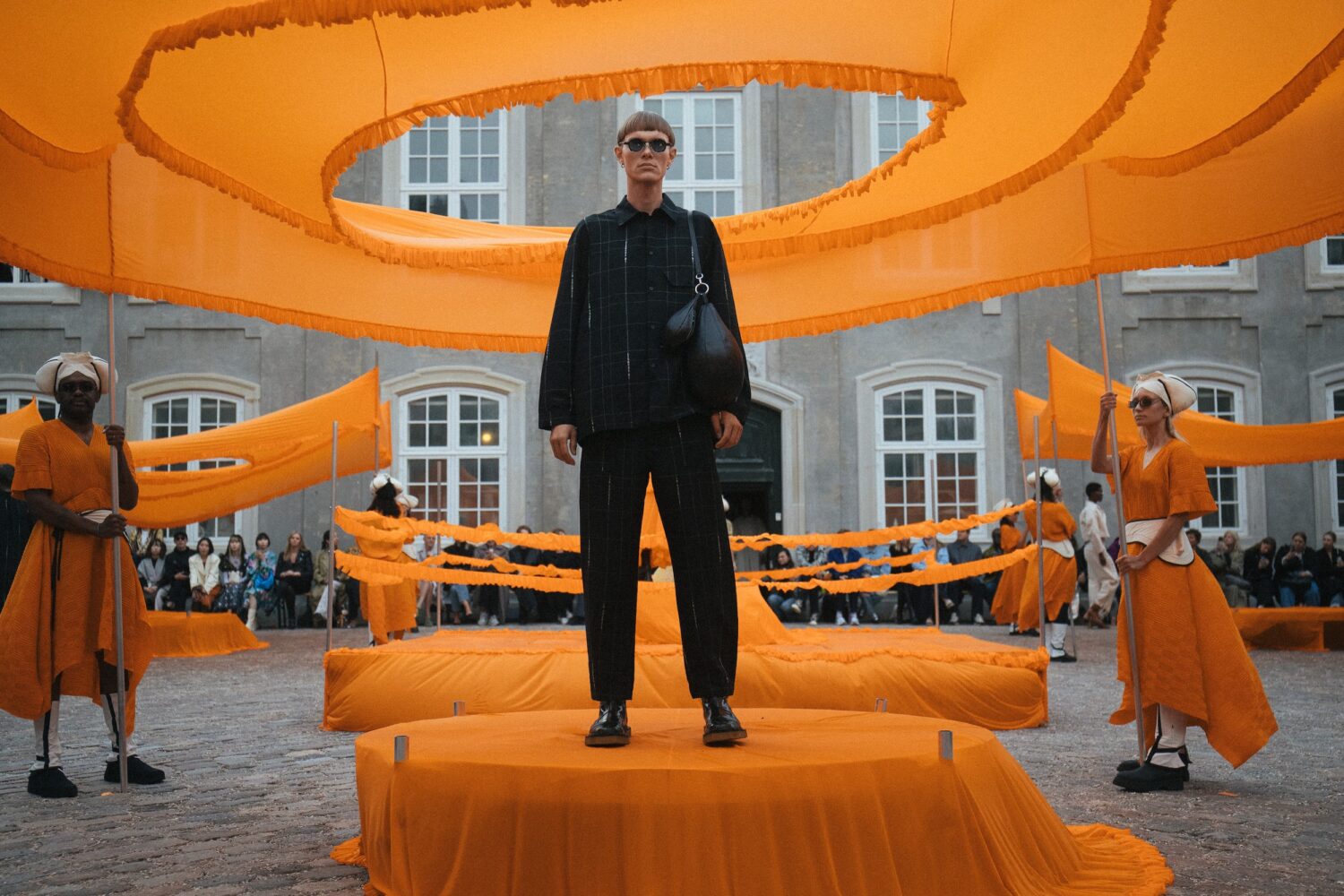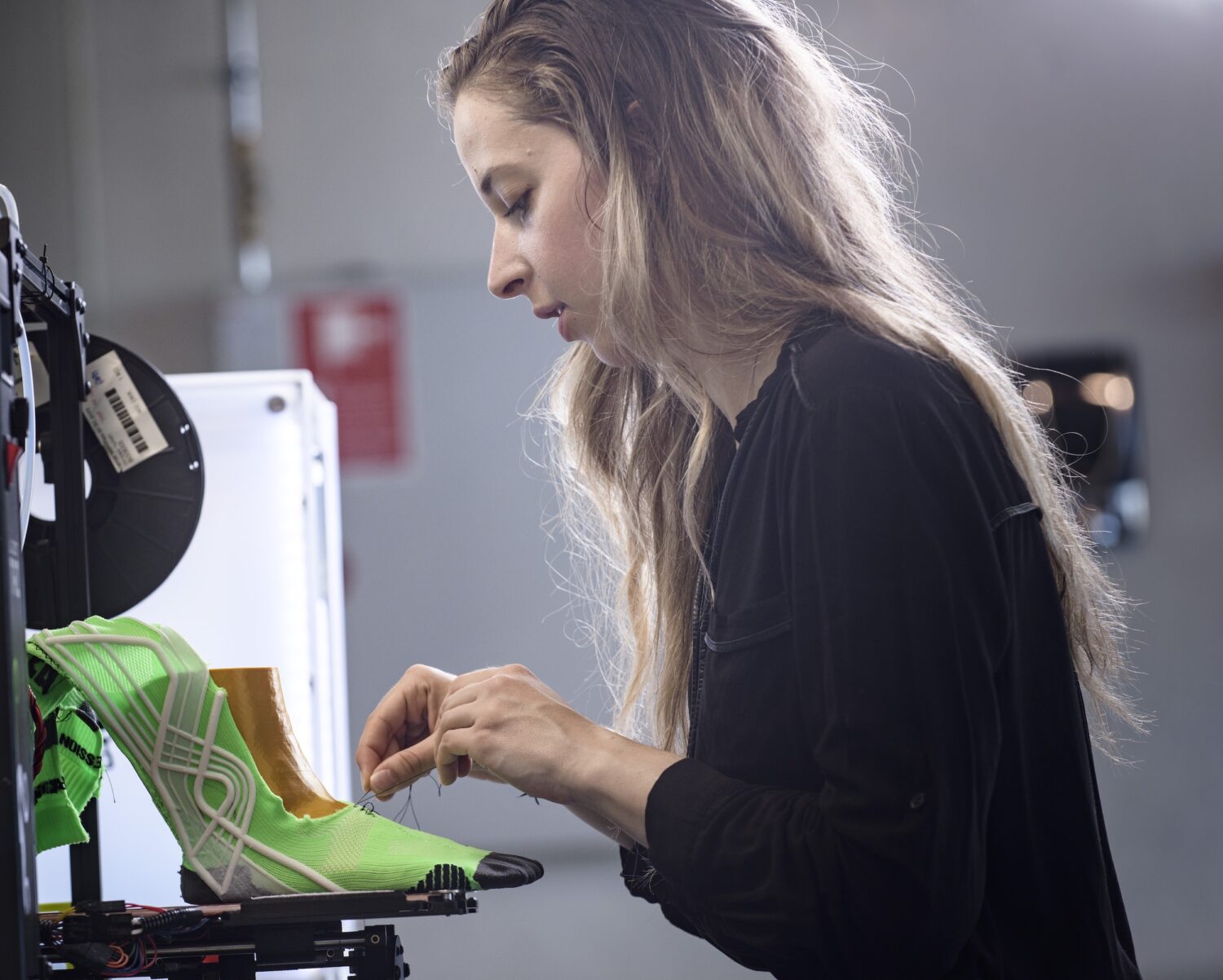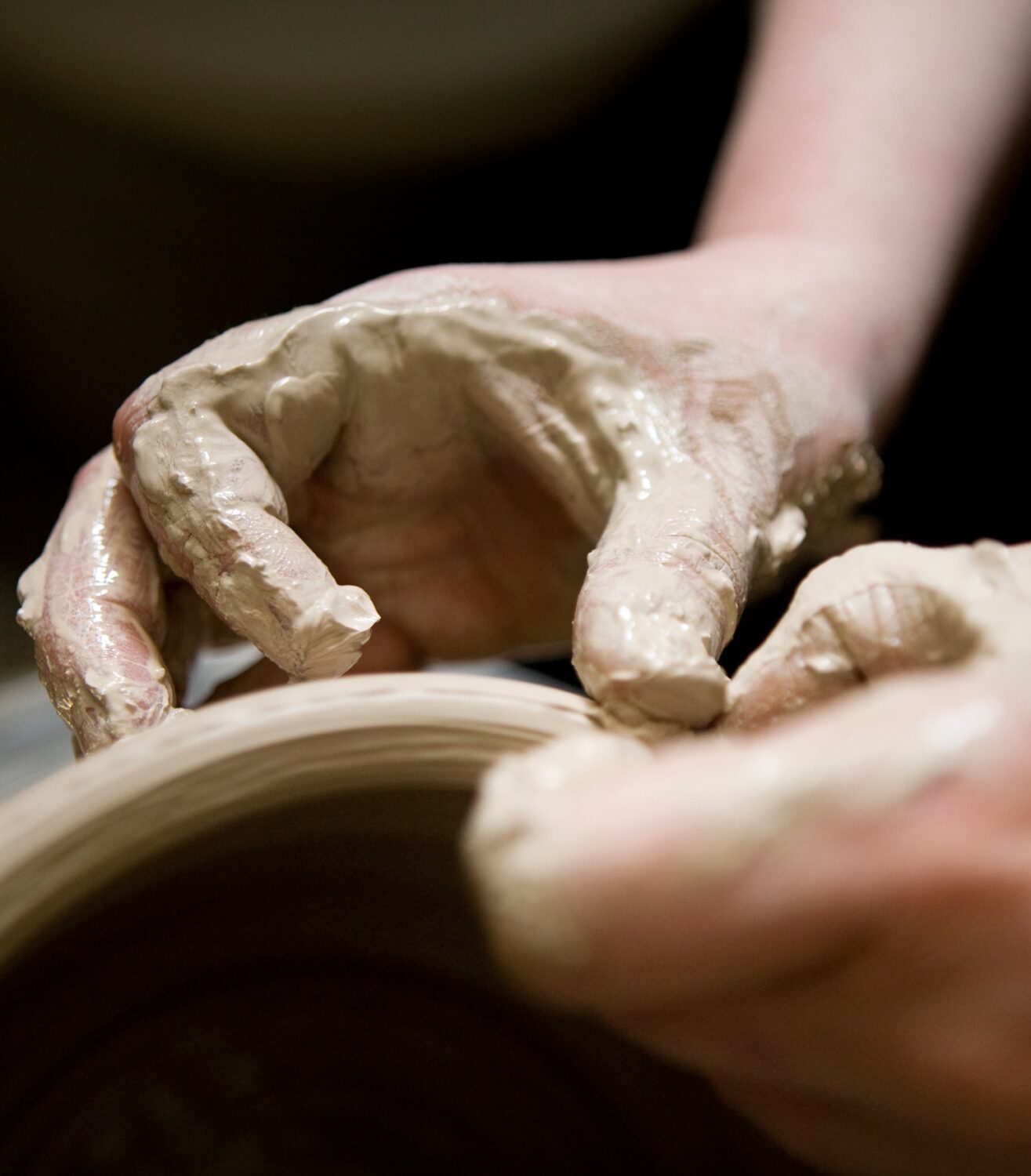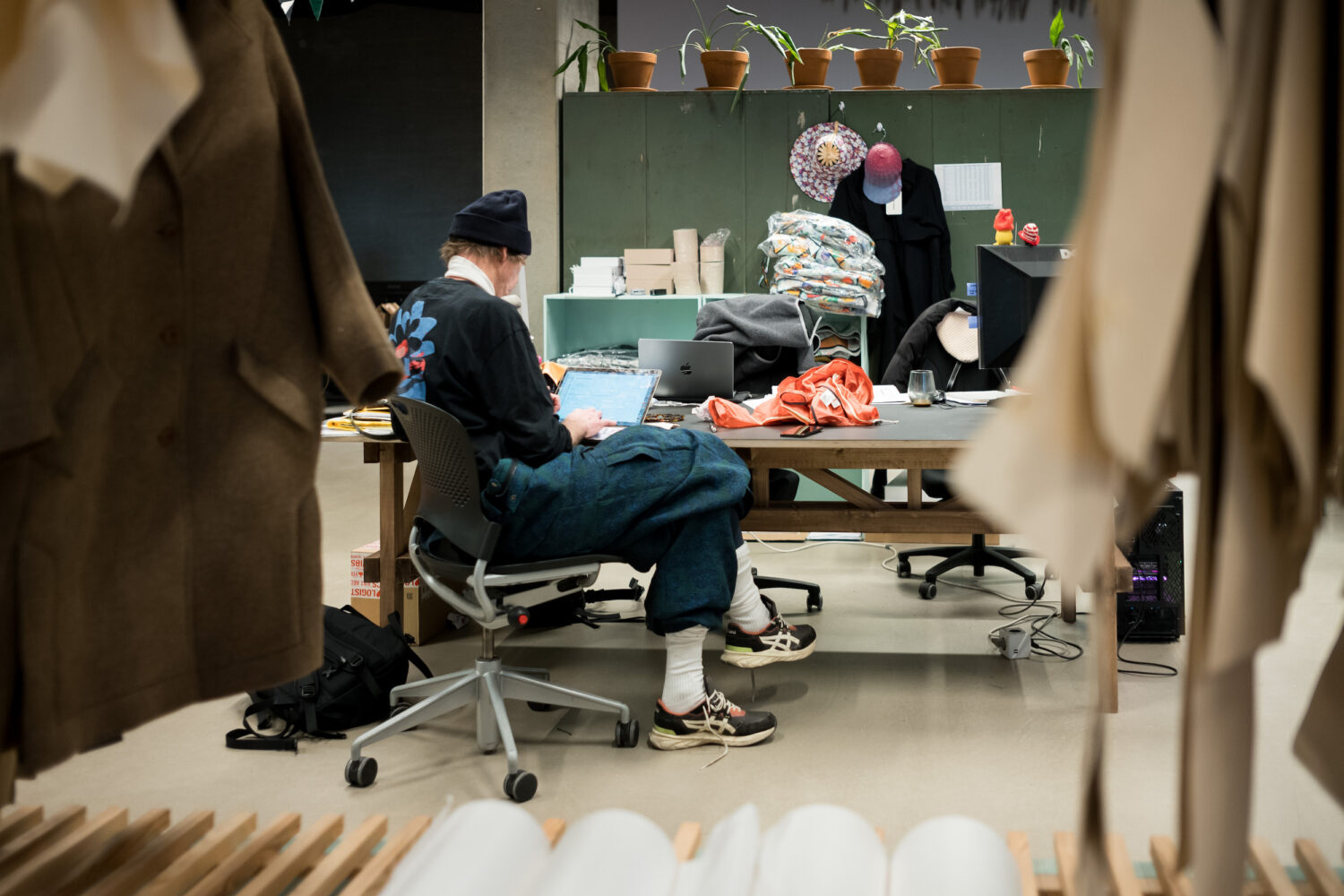A position as an assistant to a practicing designer or artisan is somewhat of a dream for many newly graduated designers in a market where entry-level positions in the industry aren’t necessarily abundant. The assistant job provides the young designer with the opportunity to develop their acquired skills in practice and acquire new ones under the supervision of an experienced designer.
Design icon Henrik Vibskov is known as both a fashion designer, artist, scenographer, and musician, besides holding the title of adjunct professor at Design School Kolding. He collaborates with young designers, both as interns, assistants, and in other roles.
Formkraft has spoken with Vibskov to gain an established designer’s perspective on working with newly graduated Danish designers. However, for him, it makes more sense to consider the whole matter from an international perspective.

Henrik Vibskov: Pursuing Multicultural Teams
Henrik Vibskov’s professional biography exudes international presence with exhibitions and engagements worldwide, including at MoMa in New York, Palais de Tokyo in Paris, and various national theaters around the world. He assembles both Danish and international talents in his team – albeit with a clear majority of international employees. However, this is not due to dissatisfaction with young Danish designers.
‘I was educated at Central Saint Martins design school in London, where maybe 30-40 nationalities were studying together. So in that sense, I was brought up in a quite international spirit. Therefore, I have always looked for the multicultural when seeking collaborators, salespeople, press teams, and also assistants on the creative front. So my team today consists of people of all sorts of nationalities,’ Henrik Vibskov explains.

Most Applicants from Abroad
“I clearly receive the most applicants from abroad for the positions we advertise. Perhaps only ten percent of the applications are Danish, whether it’s fashion, architecture, exhibition scenography, or product design. Furthermore, there are quite a few in my team who came in through internships but ended up staying because we shared common values, and it just clicked,” he says.
For Vibskov, it doesn’t make much sense to distinguish between Danish and foreign employees – he is more concerned with the exchange between the national and the international.
Danish Talents Also Think Internationally
“I don’t really think about the difference in skills between Danish and foreign-educated employees. Many Danes also seek opportunities abroad as part of their education – just like I did,” he says.
Henrik Vibskov also doesn’t subscribe to any potential stereotypes about Danes being less hardworking. “Some talk about Danes being a bit more pampered on the work front. I think they have grown up in a culture that we ourselves have helped shape. But I generally think that Danes work just as hard as foreign employees,” he says.

Danish Design Schools Were Pure Luxury in 2001
Over the years, the Royal Danish Academy and Design School Kolding have undergone a series of cutbacks and reforms, which has raised concerns in various circles about whether it has lowered the competence level of graduates – and thus made them less attractive as employees. However, Henrik Vibskov does not recognize this.
“When I returned to Denmark after my years at Saint Martins (in 2001, ed.), I thought it was amazing what facilities the Danish schools had. I was probably used to something a bit rougher from London, where it sometimes rained through the roof. Compared to that, the Danish schools were pure luxury. So it’s not the machines or equipment that are better in other countries and make the difference,” he says.
Danish Schools: Equipment is Fine – Invest in Talent
“Of course, there may be foreign schools that are so specialized that they have a particular focus, machines, and technology that are hard to compete with, but generally, I think that Danish schools keep up quite well. The interesting discussion could then be whether Danish schools should have more prominent guest lecturers from home and abroad for lectures and workshops, which could elevate the international level even more – but that requires money. But if we have the machines and equipment, it must be the talent that needs to be invested in,” he says.
Henrik Vibskov also doesn’t believe that Danish talents lack international career opportunities.
“I’m not worried that the people trained in Denmark are not skilled enough to take on assistant positions here or internationally. Danes have plenty of talent, and there are good opportunities to go abroad, just as many foreigners seek opportunities in Denmark. Of course, it requires seeking opportunities out there. But when you’re in that age range, 25 to 30 years old, it’s quite normal to get a bit away from the pond,” he says.
Theme: The Changed Educational Landscape
In light of the upcoming reform in the design schools’ curriculum, Formkraft explores how the education in crafts and design has evolved and what it means for the field.
The conversation with Henrik Vibskov highlights several aspects worth considering in the discussion about Danish design education. The design industry naturally navigates in a global market with global challenges. Designers often piece together their education with international examinations, just as Danish institutions also admit foreign students. But how can Danish methods, tools, and traditions be preserved without sounding inward-looking and nationalistic? And is it still the schools’ task to carry on the knowledge of craftsmanship?
Further reading…
The archive contains a treasure trove of articles on the subject. Search for Education or read these stories:
Interview: Troels Degn on Design Education in Denmark: Academicization is Not the Problem
The academicization of Danish crafts and design education has faced much criticism, particularly from the students’ side. However, according to Troels Degn Johansson, former lecturer and department head at the Royal Academy, academicization has lifted the education in several areas.
Read interview

Interview: At Design School Kolding, the ‘rebellion’ revolves around the balance between craftsmanship and theory
The fronts were drawn tightly when students at Design School Kolding followed up on their Copenhagen counterparts’ student rebellion in April 2022 with the opinion piece “Academicization threatens our professionalism” in Politiken. But the article marked the beginning of a broader and more inclusive dialogue between the school and students about academicization, admission quotas, and internships.
Read interview

Greasy fingers and practical research help craft out of the display case
‘Artistic craft is something essential and valuable that we must pass on to the next generation. Otherwise, the basic know-how and foundation for Danish design will lose its shape.’ Danish Crafts & Design Association, chairperson, Hanne Brøbech Sønnichsen puts into word a central challenge for the craft and design field.

Education is needed to ensure a golden future for the goldsmith profession
The goldsmith profession today involves both developing jewellery that celebrates relationships and important events, and commenting on current issues through craftsmanship. However, the Elder of the Goldsmith Guild, Lone Løvschal, is concerned about the future professionalism.



